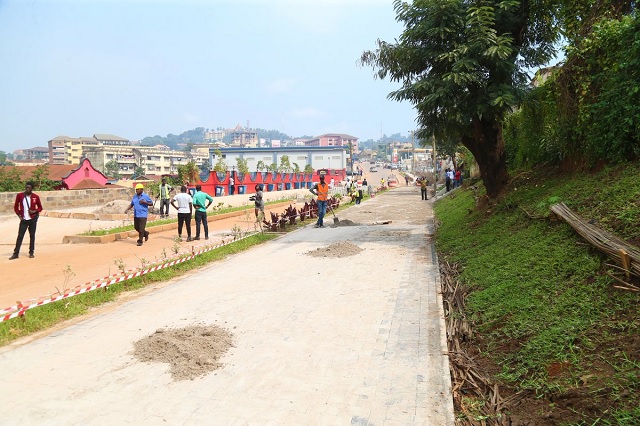
Kampala, Uganda | THE INDEPENDENT | The construction of Namirembe road into the first Non-Motorised Transport (NMT) in Uganda is at 65%, the Kampala Capital City Authority- KCCA Spokesperson, Peter Kaujju has disclosed.
The NMT project at Namirembe road is a pilot that will inform further projects of the same caliber around the country. The move is aimed at reducing congestion in Kampala. Namirembe Road stretches from Berkeley (Bakuli) junction off Hoima Road to the foot of Namirembe Road at Mini-Price Shopping Arcade.
Kaujju says the expectation is for the construction to be fully complete by November 2019. The construction of the carriage way, drainage and lanes has been completed. The road has also been expanded although it will be a one-way. Kaujju says KCCA will embark on painting the floor and installation of signals in weeks to come.
Plans for the NMT project on Namirembe road started in 2014. The plans to implement the project were set for 2015, but the Shillings 3 billion project couldn’t kick off because of funding. Project implementation is currently being supported by the UN-Habitat, United Nations Environment Project (UNEP), Goudappel Africa Goudappel Coffeng, a Dutch NGO.
The project implementation started November 2018 amidst resistance from especially traders operating around Namirembe road. Traders fear to losing their customers when the road is finally non-motorized. They argue that their customers come riding in their cars. On July 3rd, a group of traders attacked a team of KCCA engineers who had come to tour the site in the company of Kampala City Traders Association (KACITA) officials. Traders unleashed insults at especially KCCA officials whom they accused of concocting projects they referred to as detrimental to their businesses just to earn money out of them.
However, Kaujju says KCCA is determined to continue with the works until completion and operationalisation of the project. He allayed the fears of the traders, saying project shall not cripple their businesses but rather improve traffic flow in the area, which is likely to attract customers.
Contrary to popular interpretation of NMT, Kaujju said while one section of the road shall be strictly for pedestrians and cyclists, the other side will be used by vehicles.
Early this year, the Ministry of works and Transport officially disseminated the Non-Motorized Transport (NMT) Policy for implementation in Uganda.
The policy was developed and approved in 2012 with support from the United Nations Environment Programme (UNEP) with the overall aim of raising the profile of NMT within the planning and implementation of road transport infrastructure.
NMT in Uganda involves mainly walking and cycling, and it remains the main means of transport in the country in spite of increasing motorization. As such, there is a need to crease quality public spaces in and around the city transport terminals.
*****
URN
 The Independent Uganda: You get the Truth we Pay the Price
The Independent Uganda: You get the Truth we Pay the Price




Why did kcca choose the most busiest area or road in kampala for business and when even the arcade owners are baganda?